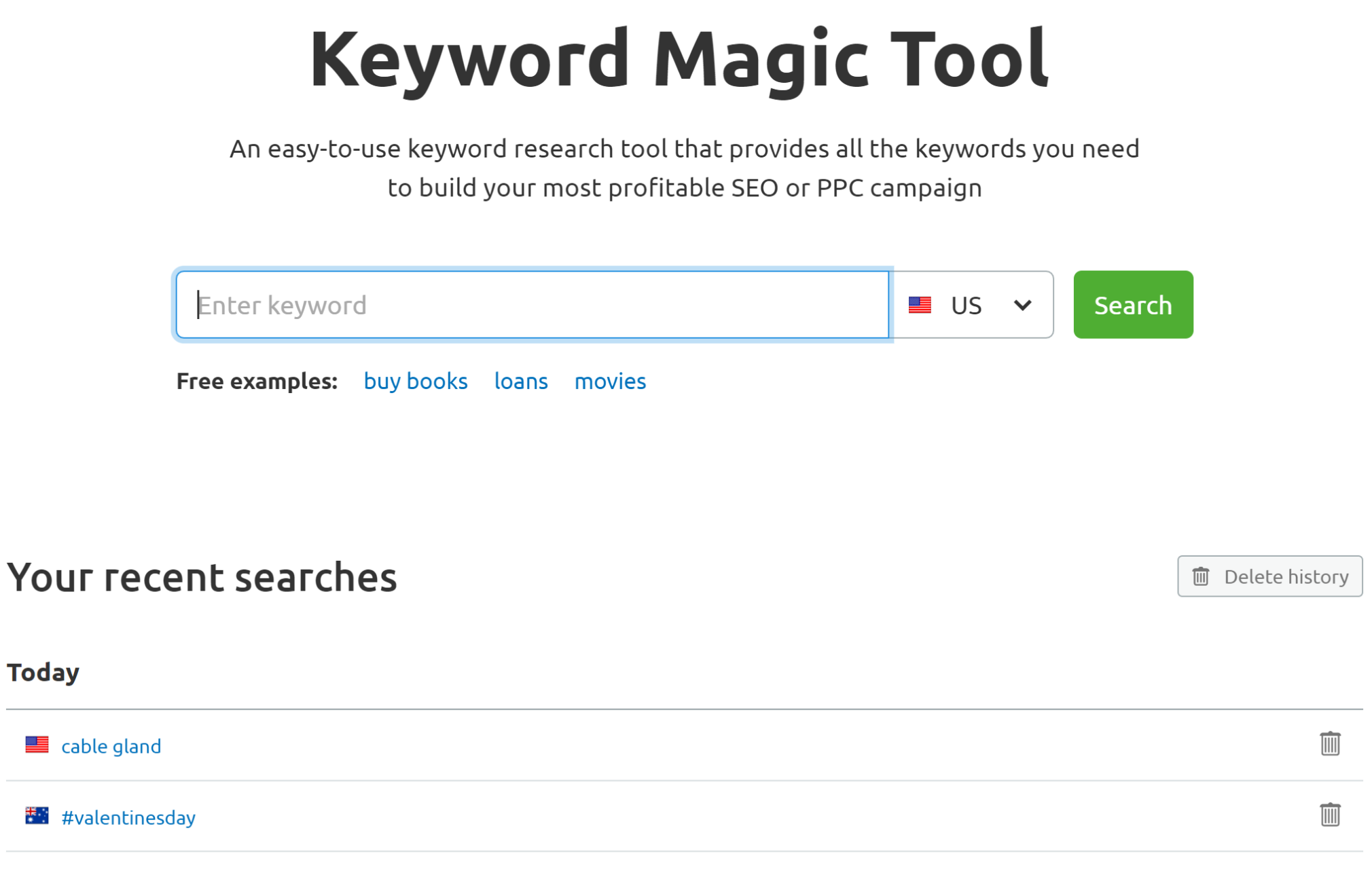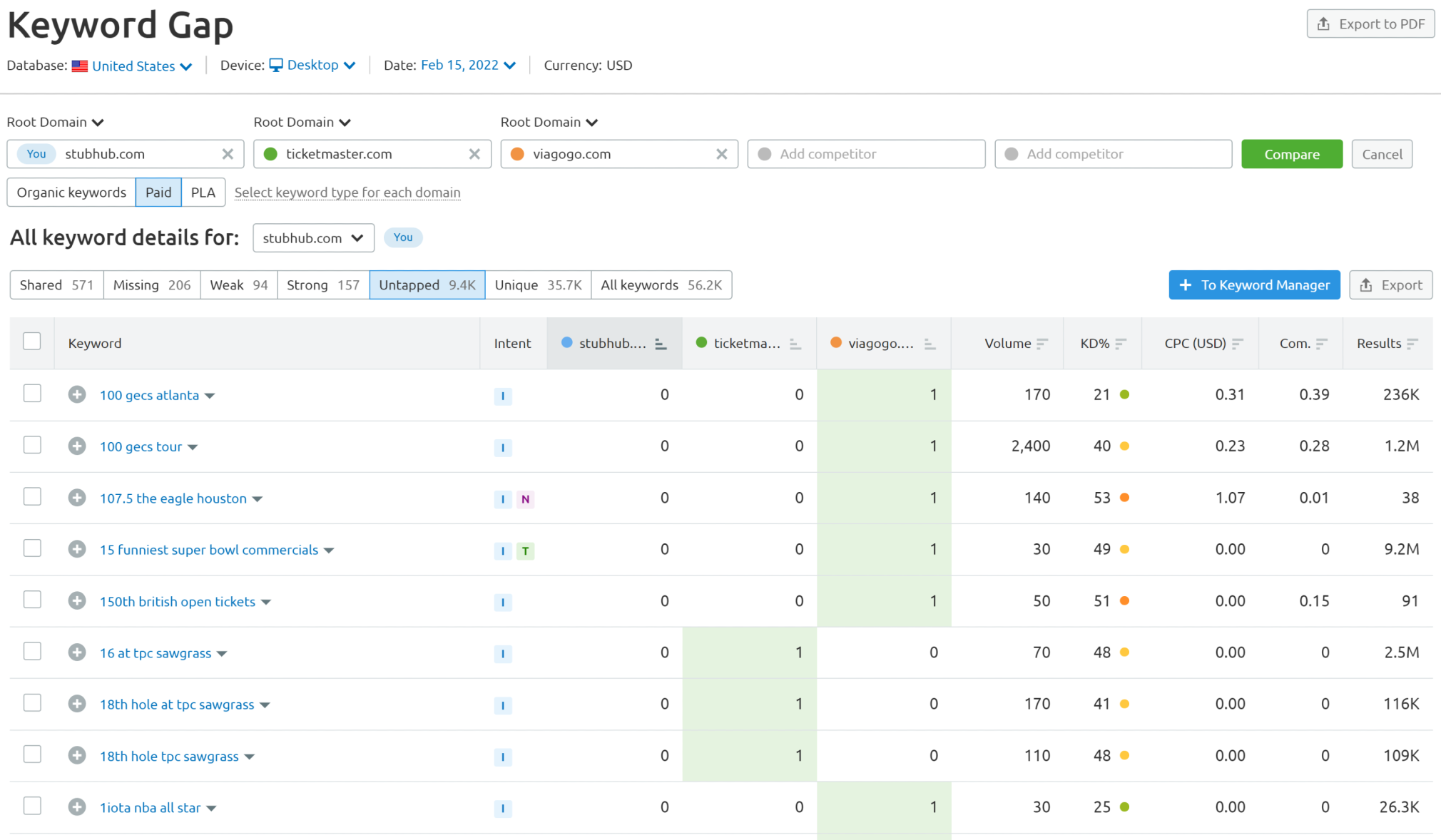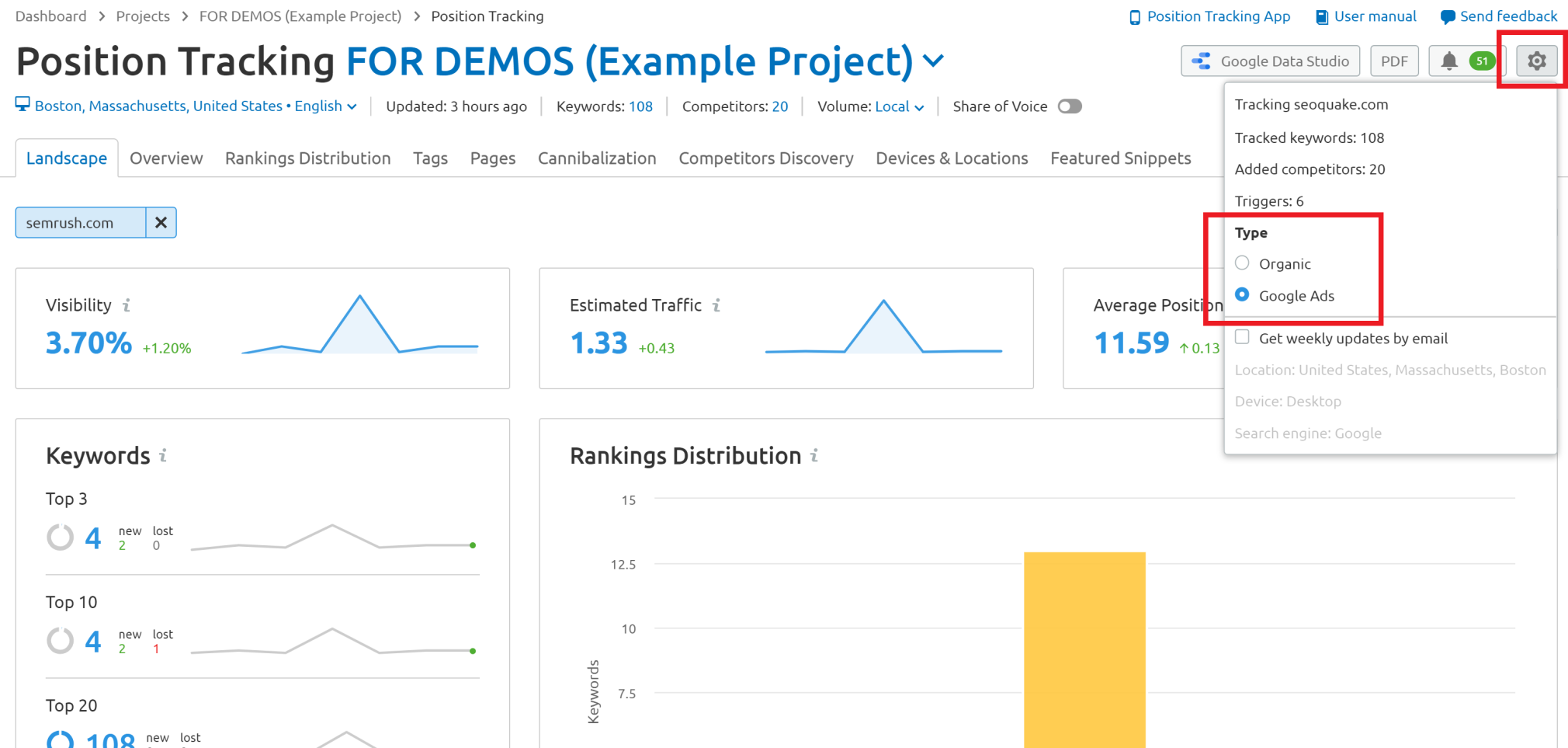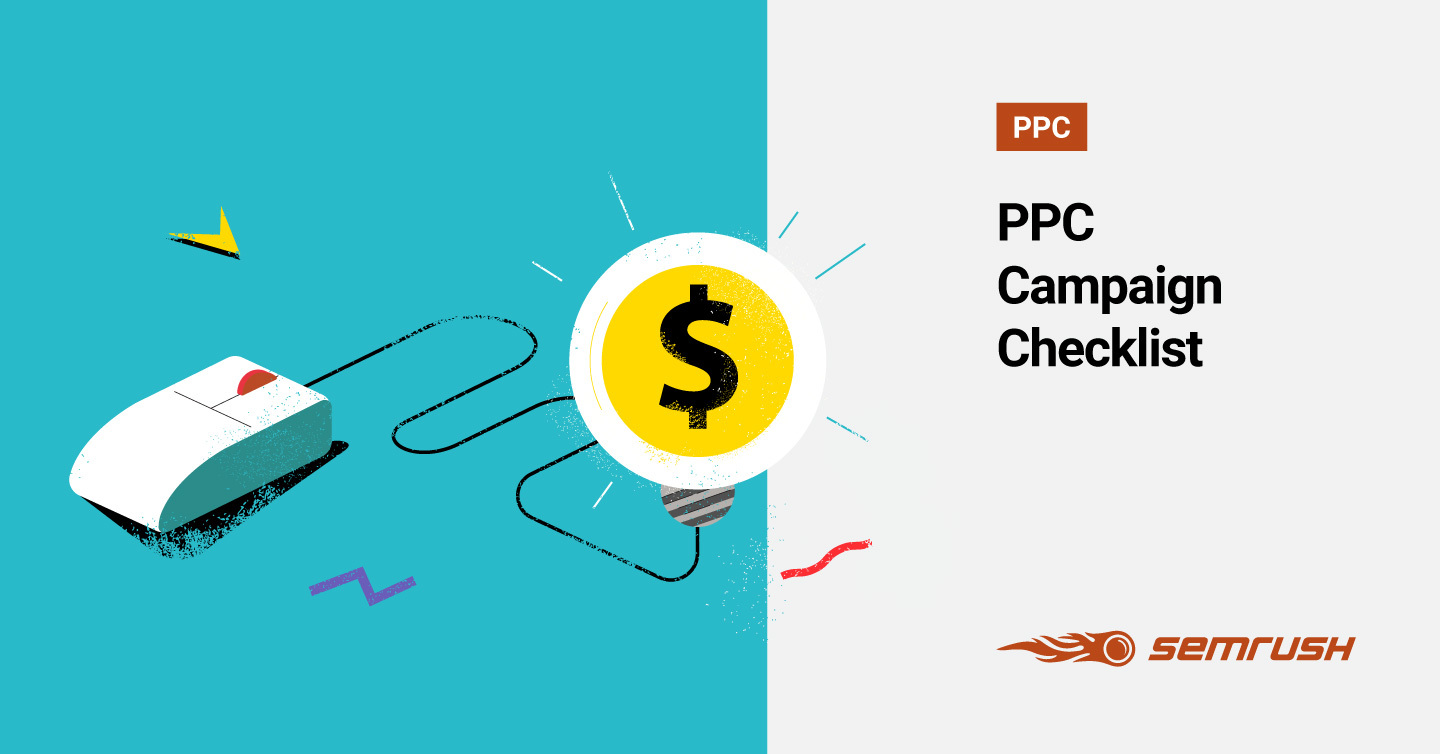Do you want to bring more visitors and conversions to your site? You know a PPC campaign can help, but you don’t want to waste hours of time on research and you don’t want to waste any of your money bidding on keywords that won’t give you a return on your investment.
Luckily, you’re reading a blog post on Semrush — the perfect place to plan and execute killer PPC campaigns.
This checklist will walk you through different tools and reports in our software that you can use to research keywords, study competitors, plan ad groups, and track rankings for a campaign, all aimed to improve pay-per-click management. Links to each area of the software are in the body of this post.
1. Keyword Research
Keywords are the heart of all search marketing. However, finding the right keywords that will create conversions on your site is easier said than done.
Semrush offers actionable data on billions of keywords. You probably knew you could find search volume and cost-per-click, but did you know you could measure a keyword’s competitive density, look up keywords in a U.S. Bing database, or export a .csv with up to a million keywords?
This can all be done in the Keyword Analytics area. Start by entering any word or phrase into the search bar to receive a Keyword Overview report with this information. This report gives you a great overview for a search term you’re interested in.
Then, you can go deeper and gather way more keyword ideas with the Keyword Magic Tool.
- Use the Keyword Magic Tool to generate a master list with millions of related keywords. This tool breaks down the keywords into categories that can help inspire ad group ideas.
- Turn on the Phrase Match filter to see the list of longer search phrases containing your keyword. Use this report to look for low-volume searches with more specific searcher intent that you can target with a relevant landing page.
- Turn on the Relatedfilter to see the list of the closest related searches based on how similar their result pages are.
- Enter a keyword in the Ad Historyreport to see the list of advertisers that bid on and ranked in Google’s top-paid positions for that keyword over the past twelve months.

2. Competitor Research
In order to find keywords that your website can get traffic and conversions from, you’ll have to learn from your competitor’s strengths and weaknesses.
Why is competitive research so important? Well, when you see what everyone else in the market is positioning themselves, it allows you to create your own unique selling point. Your unique selling point should address a problem or offer a benefit better than the competition and should be the focus of your ad campaign.
In a PPC campaign, the problem/benefit you focus on are your target keywords. So, after competitive research you should decide on the keywords that are your best opportunities to outdo the competition.
With Semrush, you can find the gaps in your competitor’s strategy and attack them with your campaign. All of this can be done within the Advertising Research toolkit.
- Start with the Competitors report. If you currently run any Google Ads campaigns, enter your domain in the search bar and receive a list of other websites that compete for the same keywords as you. If your domain has not run any Google Ads campaigns before, you can use a similar website in your industry to get results.
- Enter a competitor’s domain in the Ad History report to see the keywords that they bid on and the ads they ran over the past twelve months.
- Enter a competitor’s domain in the Ad Copies report to see the headlines, URLs, and body copy from their ads over the past year.
- Enter a competitor’s domain in the Position Changes report to identify any new, lost, improved, and declined positions for the keywords they bid on.
- Enter up to five competing domains (including your own) in the Keyword Gap tool to compare similarities and differences between respective keyword portfolios.

3. Planning Keywords, Ad Groups and Landing Pages
Once you have your thorough list of keywords to target, the next step is to organize them into ad groups for your Google Ads campaign. The structure of your Google Ads campaign will do a lot to help you save money and make the most out of your targeting.
Using the Projects section, there are a number of ways to plan the pieces of your campaign.
- Start a project using your website’s domain and set up the PPC Keyword Tool. This tool offers an interface to organize a large group of keywords into ad groups for a campaign. Add your target keywords to the campaign and organize them into ad groups within the tool’s interface.
- Use the cross-group negatives feature and generate a list of negative keywords for each ad group to prevent your ads from competing with each other on the results pages.
- Create single-keyword ad groups. Putting your top-performing keywords into their own ad groups allows you to create precise ads. With one keyword in an ad group, you can design a specific headline, landing page, and call to action for each top keywords in your campaign.
- Discover your real-time competitors in a Position Tracking campaign. Inside the tool there is a Competitors Discovery tab where you can see a list of the domains that compete with your for traffic from your target keywords. This list is updated daily based on any changes in rankings among your keywords.
- Audit your landing pages to spot any potential issues with their health and structure with Site Audit. Start a campaign to crawl your website and find any potential health issues on your pages that could damage the user experience or quality score.

4. Competitor Tracking
PPC competition may sometimes seem intimidating, taking into account the fact that you cannot keep abreast of your PPC rivals’ progress in Google Ads, you can only use your common sense to interpret some elements in their campaigns.
If you want to stay up to date with how your competitors’ ads perform and which of your rivals take up ad space at the top of SERPs for your target keywords, Position Tracking can be a great help and a useful part of your PPC campaign management.
Once you set up your campaign in the tool, make sure to choose Google Ads as the keyword “type”, not Organic, to track your competitor’s ranking for target keywords in the Google paid results.

- Discover the domains that are your biggest competition for the same target keywords in the Competitors Discovery tab of Position Tracking.
- Uncover the ad position of your competitor’s domain for a given keyword and check whether it improves or declines over time.
- See the URL of the competitor’s landing page a given keyword is related to and view how the ad is displayed in the SERP.
- Review the Overview, Rankings, and Rankings Distribution to get the overall picture of your domain’s visibility compared to competitors.
I hope this checklist helps you get the most out of your Semrush subscription and run a successful campaign. If you’re still looking for more PPC news, tips and best practices for optimizing your PPC performance, read How To Plan a Successful PPC Campaign.

